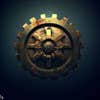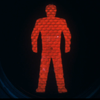Oh, my old nemesis, mounting secondary drives under Linux.
Hello, last night on a whim, I pulled the cord and finally am making a push to use Linux exclusively. I am not the most knowledgeable when it comes to Linux but I can hold my own enough.
EXCEPT when it comes to mounting drives and making them work with programs. I've gotten them wiped and mounted, but steam does not see them as internal drives and at each reboot, they or any games I put on there are gone from steam. They also do not show up with their names I've given them during formatting.
Would adding them to fstab fix some of these issues? I know they would at least be mounted before I ever open steam. So maybe there is a chance?
For more info, these are two Samsung 800 series SSD drives. One 250 GB, and the other 500 GB. These are games only SSDs as it's their only job.
I am on elementary OS version 7.
Any help will be very much appreciated. Thanks for anyone who takes the time to respond.








Add comment